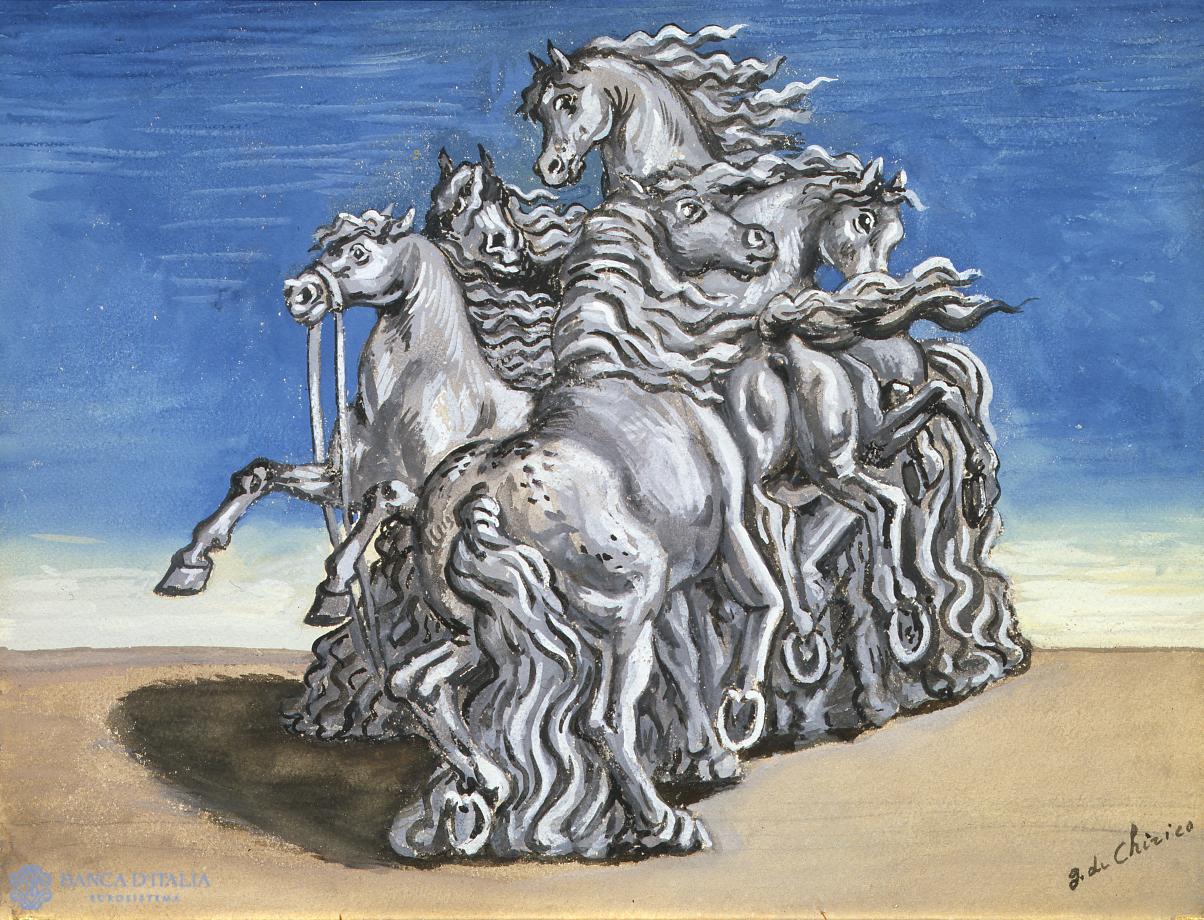The Metaphysical Art movement in Italy originated in 1910 with the work of Giorgio de Chirico. At that time the artist was in Florence, where he had moved following a period of study at the Munich Academy of Fine Arts. He later went to Paris, and from 1915 to 1916, Ferrara, where he met Carlo Carrà. Fresh from militant Futurism, Carrà modelled his work on De Chirico’s and coined the label “Metaphysical Painting”, which he applied to his own oeuvre.
De Chirico rightly claimed this label for himself, and the definition would apply historically both to his own output from 1910 to 1919 and to that of Carrà in the Ferrara years. Critics have frequently associated Morandi’s early work with the Metaphysical movement, owing to the atmosphere of suspension that pervades his still lifes. But Metaphysical painting would remain quintessentially that of De Chirico, who imbued his skewed perspectives and compositions of what were often highly-disparate objects with an atmosphere of enigma – a word he used as the title for various metaphysical paintings starting from the earliest – mystery and suspension.
De Chirico’s Metaphysical output was continued with variations and repetitions that spanned the artist’s entire career, as well as in the work of his brother, Andrea De Chirico, who took the pseudonym Alberto Savinio.
One consequence of De Chirico’s attachment to Paris was the strong impact that the Metaphysical movement had on French Surrealism, theorized by André Breton in 1924. In fact, via its recourse to the subject – which had been all but eliminated by the Cubist and Abstract painters – and by re-introducing as De Chirico did a “super–real” form of narration, Surrealist painting developed mysterious content and psychoanalytical suggestions of its own, including in relation to the Freudian subconscious. In the late 1920s there was a rupture in relations between De Chirico and Breton, owing to what was dubbed the “Ritorno al Museo” (back to the museum), another pictorial invention by the great De Chirico who, like his brother Savinio, always rejected the label of Surrealist. But this did not lead to any radical breakaway or extraneousness of Surrealism itself from the premises of De Chirico’s Metaphysical work.
One Italian precursor of Surrealism, who was not part of the Metaphysical movement, was Alberto Martini of Vicenza. Another Italian, Fabrizio Clerici, was a follower of both the Metaphysical and Surrealist trends.
Tra Metafisica e approcci surreali
From Metaphysical Painting to Surrealism
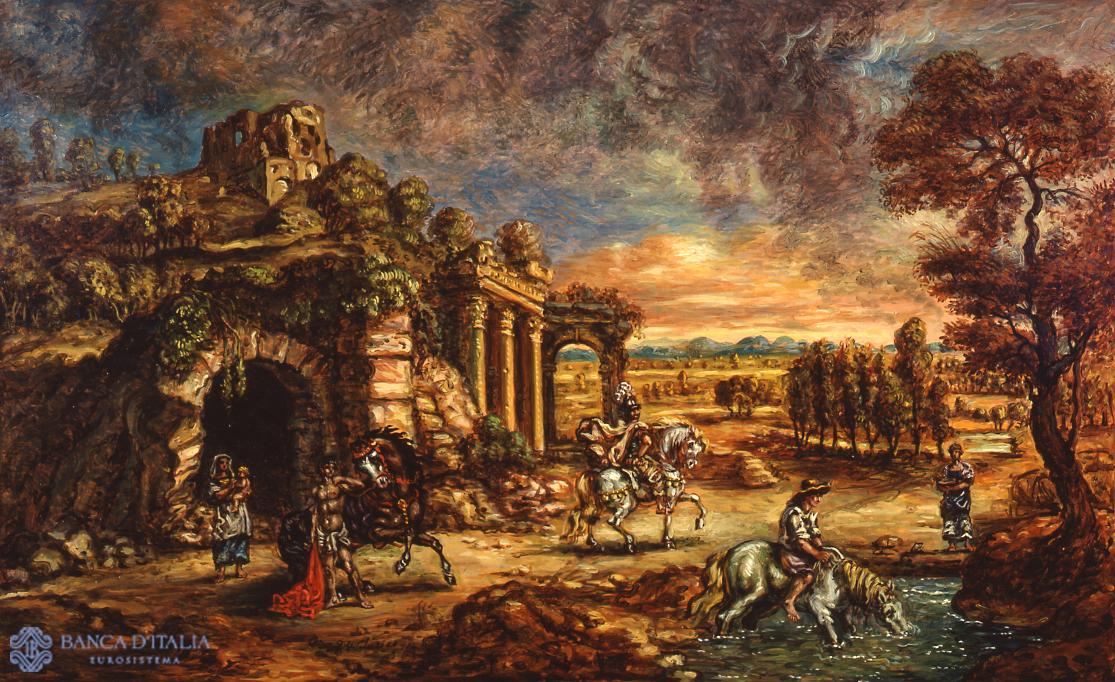
Works of art

Venezia surreale
The artist spent several years in Venice, a city he adored, so much so that in 1924 he designed the Tetiteatro especially for it. This was intended to be a floating theatre, whose aquatic whimsy reflected his love for the lagoon.
Painting
20th century AD
Abstract

I pesci sacri
The painting is signed “G. de Chirico” in the lower right-hand corner. Ranking among the best replicas of one of the artist’s most celebrated metaphysical masterpieces, his famous “Sacred Fish”, first published in 1919 in a monograph for the review Valori Plastici.
Painting
20th century AD
Still life
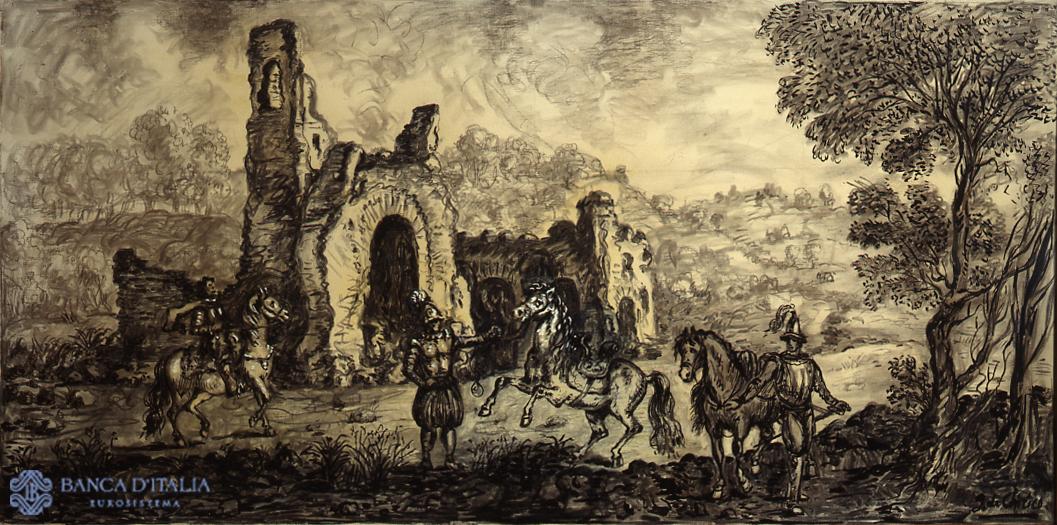
Paesaggio con ruderi, cavalli e cavalieri (bianconero)
Despite its very close iconographic resemblance to the other works by De Chirico in the Bank’s collection bearing the same title “Landscape with Ruins”, this canvas measures 80 x 160 cm and is accordingly much higher than the others. It is possible that it once hung over a doorway, with the other two paintings on either side.
Painting
20th century AD
Landscape
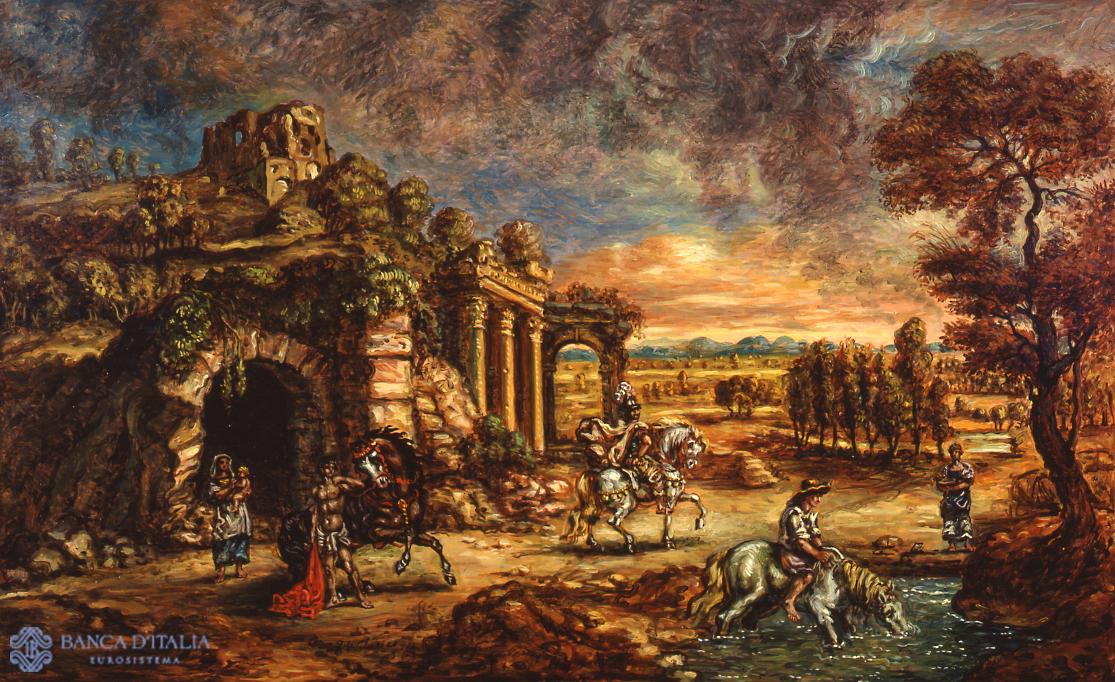
Paesaggio con ruderi, cavalli e cavalieri (cavallo che beve)
The lower left-hand corner of the painting bears the artist’s signature and the year, 1955. Unfolding along the horizontal plane, the image recalls the landscapes and narrative paintings that De Chirico began producing in the 1920s, which in the 1950s turned more baroque in style.
Painting
20th century AD
Landscape
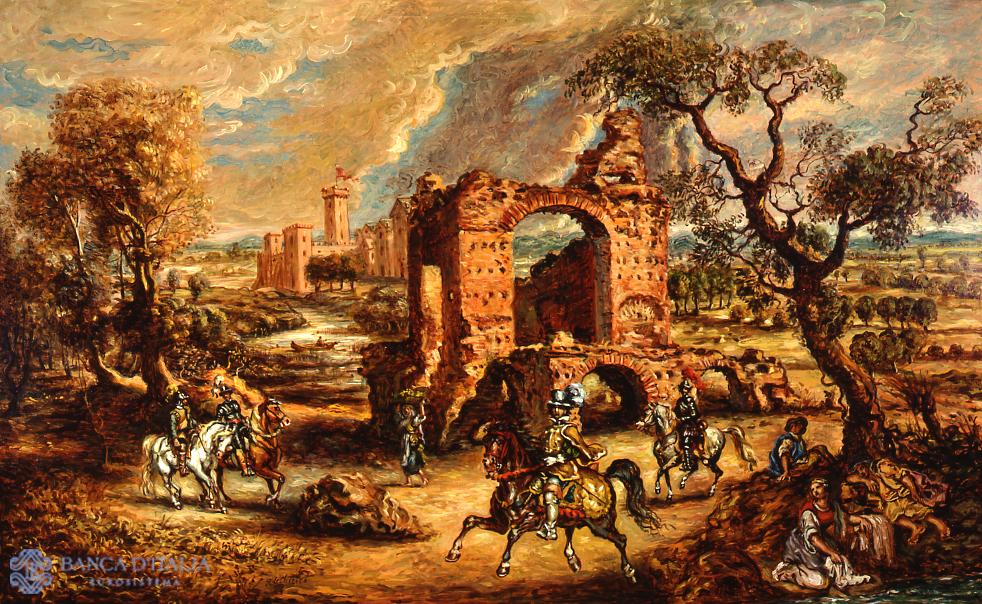
Paesaggio con rudere, castello e cavalieri
Bearing the artist’s signature and the year 1955 in the lower right-hand corner, this painting is considered the companion piece to another work of the title Paesaggio con ruderi, cavalli e cavalieri (cavallo che beve), also in the Bank’s collection.
Painting
20th century AD
Landscape
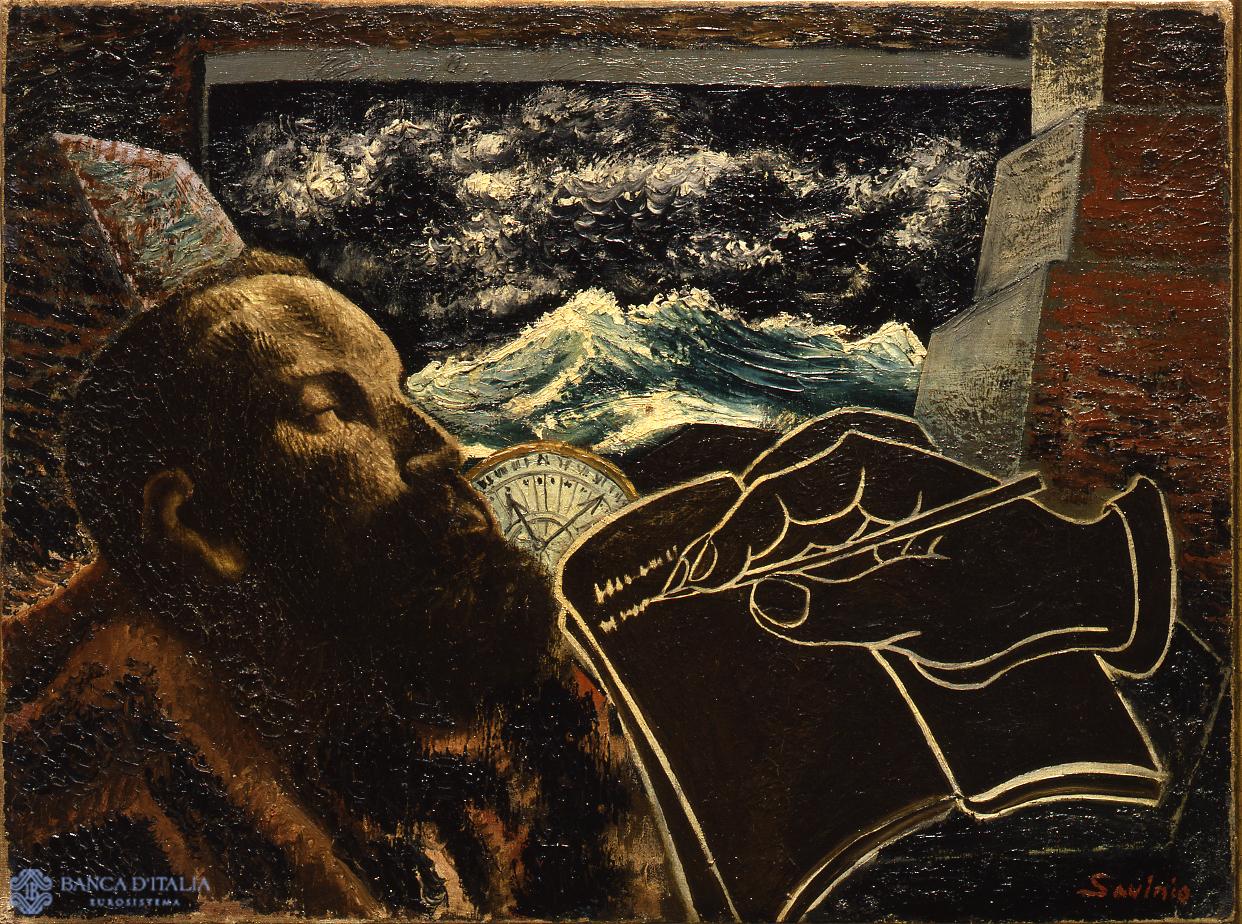
Le Matelot
In a personal show of 1927, Savinio exhibited a painting entitled Le Matelot (the sailor), which is presumably this work. Though it is generally assigned to 1928, Pia Vivarelli concluded that it should be backdated by one year given the likelihood of it being the same work as the one in the exhibition catalogue.
Painting
20th century AD
Figurative
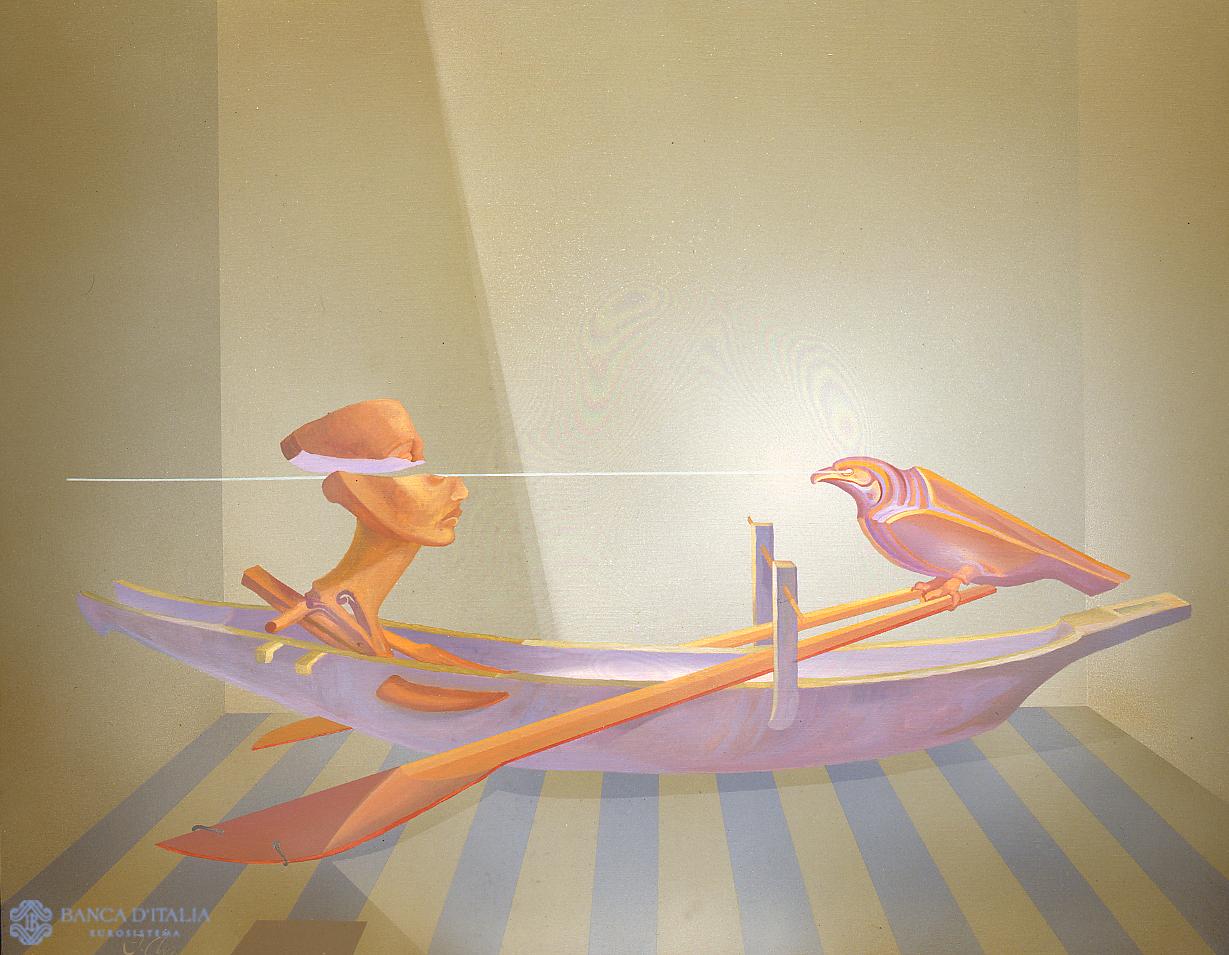
Coup d'oeil
The artist reworks visions inspired by De Chirico’s Metaphysical art in a profoundly different manner, seen both in the quality of the draughtsmanship and in his choice of palette. Extremely pale, the colours in this work become subtle gradations of shadows cast on the walls of a room whose floor is comprised of alternate bluish and pale grey vertical stripes that stretch away from the viewer.
Painting
20th century AD
Abstract

